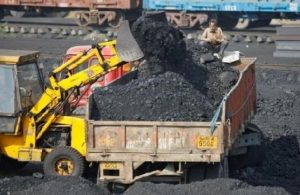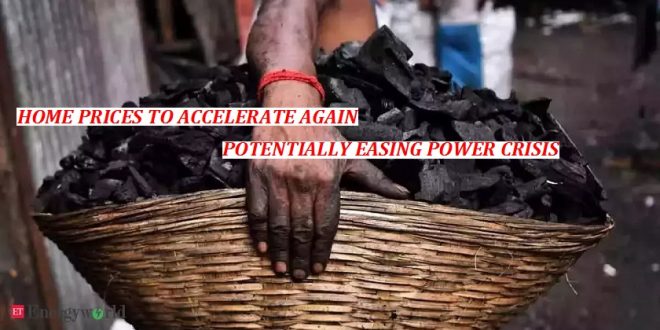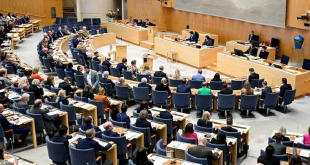01-06-2022
Bureau Report + Agencies
NEW DELHI/ BENGALURE: India expects rainfall in the biggest coal-producing areas of its east-central region to be below the long-term average this year, potentially easing utilities’ coal shortages as there could be fewer disruptions to mining activity due to flooding.
East-central India includes the states of Odisha, Jharkhand, Chhattisgarh and West Bengal, which together account for nearly half of the country’s annual coal output. Coal accounts for nearly 75% of India’s power generation.
 India expects overall rainfall during the annual monsoon to be 103% of the long-term average. Higher rainfall in other parts of the country could increase hydro power generation and irrigation-driven electricity demand could be lower, easing pressure on thermal power.
India expects overall rainfall during the annual monsoon to be 103% of the long-term average. Higher rainfall in other parts of the country could increase hydro power generation and irrigation-driven electricity demand could be lower, easing pressure on thermal power.
India has reversed a policy to cut coal imports to zero, invoked an emergency law to operate imported coal-based utilities and plans to reopen closed mines to address surging power demand, which is seen growing at the fastest pace in at least 38 years.
Domestic coal output typically dips during the annual monsoon period between June and September every year due to mining disruptions, and state-run Indian Railways also faces delays due to water-clogged tracks and route closures.
State-run Coal India (COAL.NS), which produces 80% of India’s coal, reported the first fall in production in two decades in 2019/20, due to the heaviest rainfall in 25 years.
The India Meteorological Department (IMD) expects rainfall in the coal-producing regions of Maharashtra and Madhya Pradesh, which together make up a quarter of India’s output, to be above average, it said on Tuesday.
The intensity of rainfall would be more critical than overall rainfall during a season. Relentless rains over short periods of time could cause mine flooding, even when overall rainfall during the monsoon is deficient.
 Erratic rainfall patterns, which India has attributed to climate change, have impeded output in the recent past.
Erratic rainfall patterns, which India has attributed to climate change, have impeded output in the recent past.
Sudden floods in 2019 in the Dipka mine, India’s third largest, halted operations for days, and it took over a month for resume production at full capacity.
Meanwhile, Indian house prices are set to accelerate this year to a pace not seen in half a decade, according to a poll of property analysts who also warned that higher interest rates will crimp affordability, especially for first-time buyers.
A lack of demand has kept India’s property market relatively quiet during the pandemic compared with other world markets that rocketed higher as households scrambled to buy more living space. Those markets are now cooling but the release of pent-up demand in India, as most employees return to workplaces amid improving vaccination rates and fewer COVID-19 cases, has stirred the Asian country’s housing market along with a return of large institutional investors.
Home prices were expected to increase 7.5% nationally this year, the fastest growth in five years, according to a May 11-27 Reuters poll of 13 property analysts, an upgrade from 5.0% expected in a March poll. Average house prices were forecast to rise 6.0% next year and in 2024.
Those forecasts come despite expectations for sharply higher interest rates after the Reserve Bank of India earlier this month surprised markets with a 40 basis point repo rate hike to 4.40% and hinted more are coming soon.
 “We are entering a period of price growth, driven in the short- to immediate-term due to rising input costs, and medium- to long-term with demand levels remaining strong and the existence of big players backed by institutional money,” said Rohan Sharma, director at JLL Research.
“We are entering a period of price growth, driven in the short- to immediate-term due to rising input costs, and medium- to long-term with demand levels remaining strong and the existence of big players backed by institutional money,” said Rohan Sharma, director at JLL Research.
Sharma said given that more rate hikes are coming, “the window of opportunity for homebuyers to enter the market at the current affordable (levels) will close over the next 2-3 quarters.”
Over 60% of respondents to an additional question in the survey, eight of 13, said affordability for first-time homebuyers would worsen over the next two years.
Expensive house prices have led many would-be first-time homeowners to rent instead. But rents too are expected to become more expensive, according to a majority of respondents.
Vivek Rathi, director of research at Knight Frank, reckons for every one percentage point increase on a home loan interest rate, affordability is reduced by more than 7%.
Knight Frank, Colliers International, JLL Research, Liases Foras, and TruBoard Partners all expect a significant slowdown in housing activity if rates reach 6% or above.
At the same time, input costs on basic materials have gone up significantly over the past few months globally because of the pandemic-related supply chain disruptions, made worse by Russia’s invasion of Ukraine in February.
 There is scant reason to expect this trend to reverse any time soon, which means developers who have been absorbing these costs are now passing these on to buyers. This will also contribute to house price rises, analysts said.
There is scant reason to expect this trend to reverse any time soon, which means developers who have been absorbing these costs are now passing these on to buyers. This will also contribute to house price rises, analysts said.
“Improving demand and an increase in inflationary trends of basic raw materials in construction including cement, steel and labour are the key factors which are likely to push property prices northward,” said Anuj Puri, chairman at ANAROCK Property Consultants.
The latest Reuters poll also showed house prices in India’s two most populous cities of Mumbai and Delhi, including its surrounding National Capital Region, will rise between 4% and 5% this year and next.
However, house prices in Bengaluru and Chennai, where analysts said homes were fairly valued, were forecast to rise 5.5%-6.5% over the course of the next two years.
 Pressmediaofindia
Pressmediaofindia




